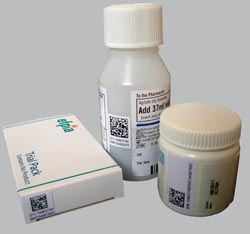European Coding System Looks to Combat Counterfeits: Part One
In October 2009, the European Federation of Pharmaceutical Industries and Associations (EFPIA) announced its pilot project—a coding system aimed at reducing the risk of counterfeit drugs dispensed to patients.

The project entails the use of a small barcode to verify individual packs of medicine, aiming for an end-to-end tracking, which allows the pack to be checked at all points of distribution, including pharmaceutical retailers and wholesalers.
In November, we got in touch with Anthony Barron, the EFPIA coding and identification project coordinator, to learn more about the project currently under trial in Sweden. This is part one of our interview.
PSM: PSM covers counterfeit drug incidents, which we map out for folks online. It’s hard not to notice that a fair amount of counterfeit incidents occur in Europe. How dire is the counterfeit drug situation in the European Union (EU)?
Anthony Barron: Counterfeit medicines have become an increasing threat around the world, especially where regulatory and enforcement systems are the weakest. Figures show that this trend is no longer restricted to developing countries, with Europe seeing a growing number of cases of counterfeit medicines. Within the EU, we’ve seen an increase in the numbers of counterfeit incidents from 202 in 2006 to 347 in 2008.
The UK Medicines Health products Regulatory Agency (MHRA) has also reported that incidents affecting the regular distribution chain have steadily increased since 2004, with counterfeit medicine reaching patients on nine occasions.

PSM: The EFPIA is partnering with pharmaceutical retailers and local wholesalers on the coding system—how is this teamwork instrumental in the success of the project?
AB: Our objective was to collaborate on a coding solution that was effective, technically robust, cost-effective for manufacturers, wholesalers and pharmacists alike and could work for the long-term.
An end-to-end product verification system at the point of dispense (i.e. a pharmacy or hospital) seemed like the best way meet this criteria while providing a good scope for improving supply chain security and patient safety. A more efficient identification of products may also lead to more effective product recalls in case of an alert.
Coming up, the conclusion of our interview with Anthony Barron. In the meantime, learn more about the EFPIA’s coding project and visit our Consumer Resources section for tips on protecting yourself from substandard and counterfeit drugs.